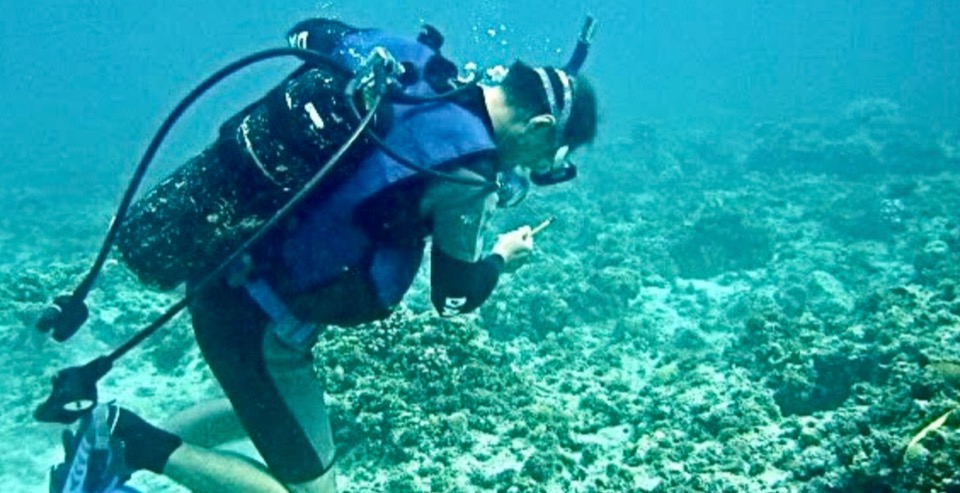VSU marine bio prof went finding Nemo, literally
- Details
- Written by Allen Glen Gil
-
Published: 16 February 2021

Dr. Humberto R. Montes, Jr., a marine biology professor of the VSU’s Department of Biological Sciences (DBS), was part of groundbreaking research that explored how clownfish larvae are dispersed. Clownfish are best known for their colorful portrayal in the movie Finding Nemo.
Professor Montes collaborated with researchers from Rutgers University and the University of Rhode Island, both based in the U.S., to conduct a seven-year survey of coral reefs in Ormoc Bay, Philippines.
Understanding larvae of fish in coral reefs are dispersed is important because it gives valuable insights into conserving clownfish and other coral reef species.
One of the most poorly understood fields in marine ecology is marine larval dispersal, EurekAlert says. As they are hatched, baby fishes in coral reefs join a swirling sea of plankton as small, transparent larvae. They are then dispersed to different areas through currents, winds, and waves.
Knowing more about these dynamics can be very crucial for future marine conservation efforts and management, especially in designing marine protected areas and in controlling invasive species.
Unlike previous studies that only looked into dispersal for shorter periods, the seven-year study found out that larvae dispersal varied a lot over the years and seasonally, including during monsoons.
This meant that there was variability in how much larvae went around between years and seasons, but where they were going was pretty much the same.
The results further suggest that when scientists account for this “dispersal variability” rather than using data from a single year or averaged data over time, the estimates of the persistence of fish populations will be lower.
In an article featured on the National Science Foundation website, the study’s lead author Katrina Catalano from Rutgers University explained the implications of their study.
“Our study’s findings mean that if we don’t account for dispersal variability, we could be overestimating the stability of coral reef fish populations”, Catalano said.
The lead author argued that studying dispersal variability in more species over greater time scales will provide a better understanding of causes of variation that can lead to a better design for protected areas.
The Philippines is regarded as one of the global centers of marine biodiversity, possessing more species per unit area than any other place on the planet.
According to the Department of Environment and Natural Resources, our country is home to 468 species of hard corals, 1,755 species of reef-associated fishes, 648 species of mollusks, 19 species of seagrass, and 820 species of algae.
These marine resources provide billions of pesos to the Philippine economy through various ecological services benefits, ranging from the commercial fishery, tourism, coastal protection, and climate regulation. Therefore, conserving our seas and oceans, as well as the species that inhabit them, are of utmost importance.
The findings of this study will hopefully provide new ways of protecting our rich but fragile marine ecosystem in the Philippines. The researchers conducted the study from 2012 to 2018 along a 30-kilometer coastline consisting of 19 reef patches in Ormoc Bay, in Leyte, Philippines.
The U.S. National Science Foundation-funded the study, and the results were published in November 2020 under the journal, Molecular Ecology.
Dr. Montes, the collaborating researcher from VSU, is the former director of the Institute of Tropical Ecology and Environmental Management (ITEEM).

